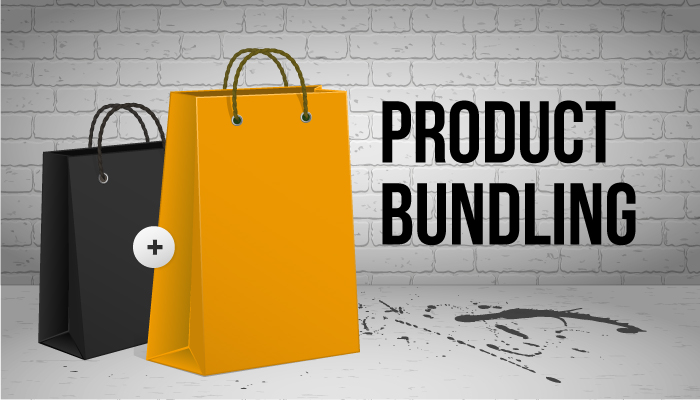
Bundling products is an old and simple sales tactic. The strategy is to sell two products together for less than the customer would pay if bought separately. For example, a coffee mug costs $10 and a bag of coffee costs $10, but a product bundle costs $15 instead of $20.
Product bundles are a great way to increase sales and customer satisfaction. Customers will be impressed by the savings they receive from purchasing multiple products in one transaction. Here are the top five product bundling ideas.
1. Ensure Customer Savings
Bundling is more than just selling items together. If you don’t offer any financial savings, then selling the bundle is the same as selling the items separately.
Offering a bundle as a promotional offer ensures that the customer will save money. For example, if a customer buys X product, they get Y product half price. Make sure employees remind customers with offers like this at the register.
To emphasize the savings, include a list of the bundle’s contents and their individual prices. It doesn’t have to be as formal as a PO or an invoice. Instead, the list should be friendly and informative, and show the money saved by purchasing the bundle.
2. Subscription Bundles
A subscription box is a very popular product bundling. This is when you send a monthly box of complementary products to a customer. Subscriptions paid monthly ensure a steady revenue stream.
If you go this route, you may need retail software. Monthly bundles require a keen eye on your product inventory, as you must have enough for both current subscribers and new customers. Investing in retail software can help track inventory and estimate monthly orders.
3. Bundle Complementary Products
Before mailing your bundles, do some market research and plan your products. Consider your target demographic and current sales figures for individual items that you might bundle. Remember that even if you bundle two products, you should still sell them separately.
When creating product bundles, there are two approaches: sales-focused and customer-focused.
Focus on the top and bottom selling products for the sales-focused strategy. Consider bundling a low-selling item with a high-selling item. As a result, you’ll make more money on the best-selling item while avoiding an overstock of the less popular item.
The customer-centric approach necessitates more product It’s not enough to look for products that are similar or share a product category. A clothing store may sell a matching outfit as a bundle. This strategy requires more work, but it provides the same increased sales and customer satisfaction as product bundling.
4. Focus on Marketing
When promoting product bundles online, don’t forget about traditional marketing tools like social media and SEO. Create a page just for your bundles. Then do keyword research to optimize the page for search engines. Finally, share it across all of your social media accounts.
But don’t just share it once. Make seasonal product bundles and heavily promote them at the appropriate times. Remember to highlight the gift-giving potential of the bundles to boost sales around Christmas and Valentine’s Day.
Instead of focusing on ecommerce, your marketing strategies will be very different. This does not mean you have fewer options to differentiate your products.
Placing bundled products in the front of the store and organizing displays helps a lot. Remind customers of bundle offers at the checkout. Saving money can improve customer satisfaction.
5. Keep Bundles Simple
Product bundling works best when the deal is clear. So even a huge bundle of products can be unappealing to customers.
Because the savings a customer makes by purchasing a product bundle should be obvious. In order to understand the savings offered by a bundle of more than ten products, a customer must want all of the products in the bundle. They won’t buy the bundle if they don’t like more than two or three items out of ten.